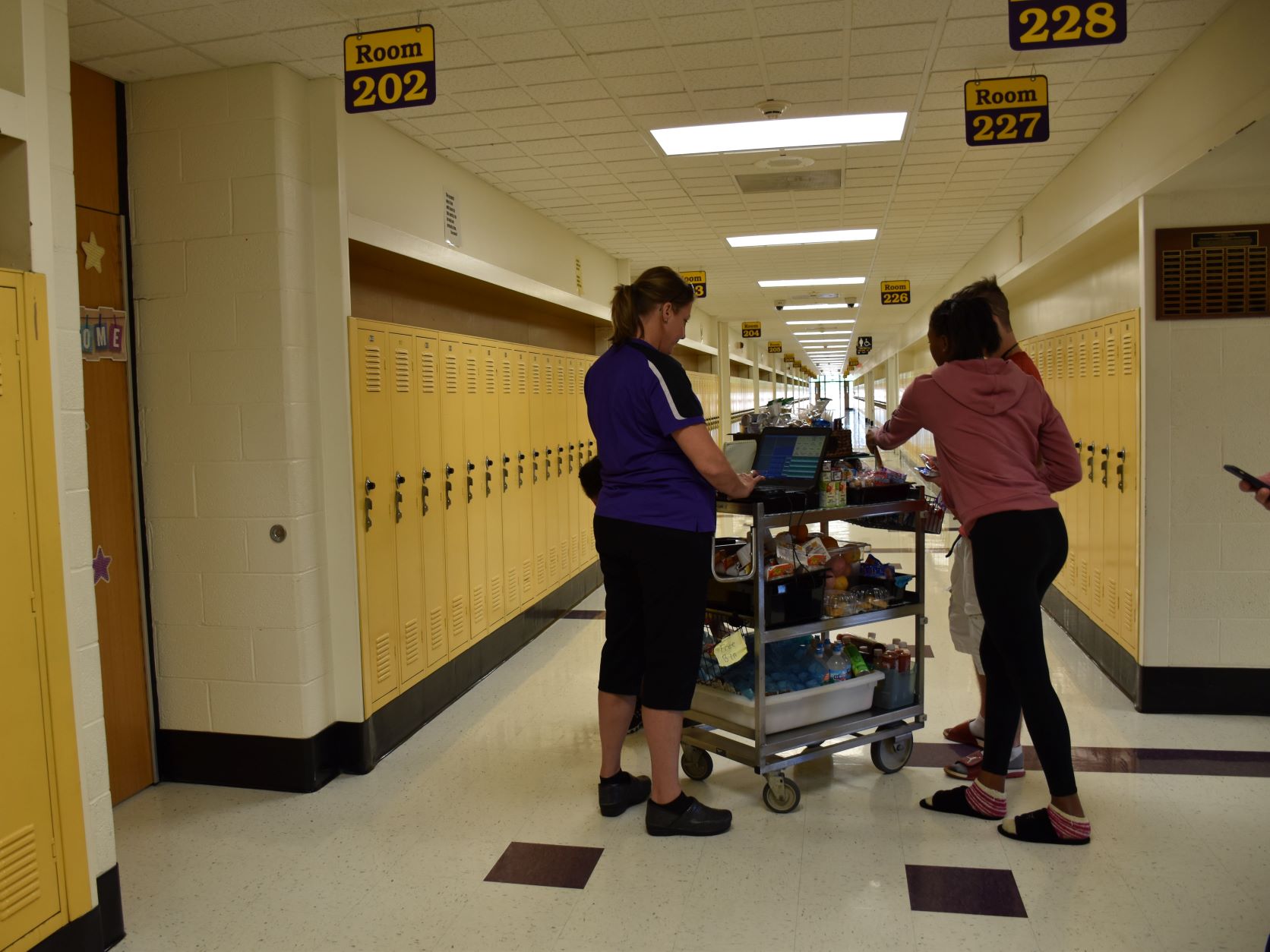A "Second Chance" at breakfast can make all the difference for hungry students

Second Chance Breakfast: A Profile
What it is:
Breakfast is served during a break or passing period, usually in a grab and go style. It can also include a second round of traditional cafeteria breakfast (at schools where older students have a free period). Second Chance breakfast is a great option for students who miss out on traditional cafeteria breakfast or simply aren't hungry earlier in the morning.
How it works:
Carts or small tables can be set up in common areas with pre-bagged meals and/or options for students to create a reimbursable breakfast. Here are a few examples from Illinois schools:
-
Bloomington High School (Bloomington)
Mobile carts are loaded with breakfast items, snacks, and beverages. Ater the instructional day has started, food service staff push the carts through the halls and "park" outside groups of classrooms. For classrooms participating in this Second Chance breakfast model, teachers allow students to quickly choose and pay for items in the hallway, then return to class with minimal disruption. The mobile carts then move to another set of classrooms. Unwanted food items are placed in the "free bin," helping to decrease food waste and share foods with others who may be short on funds. The free bin is lined with ice packs to keep items cool for food safety.
-
Elmwood Park High School (Elmwood Park)
Just before the end of first and second periods, food service staff park a breakfast cart in the middle of the first floor hallway. Students can pick up breakfast on their way to class during the five minute passing period. Read more at Rise & Shine Illinois!
Participation rate:
Up to 70%
Potential issues:
The main concern with the Second Chance breakfast model are waste management and time to eat. Here are some best practices to make sure Second Chance breakfast is a success:
- Place extra trash cans near breakfast serving areas and in hallways. Classroom and hallway signage may also be helpful to prompt students to toss their trash.
- Keep cleaning wipes and a small broom on hand in the event of spills.
- Consider offering a limited menu of items that are more portable and/or less messy.
- If passing periods are short, it may be worth discussing options with administration, such as letting students finish eating in the first few minutes of their next class.
- Make sure mobile carts are placed in areas that are easily accessible to students, and consider having more than one cart to speed up operations and ensure all students have the opportunity to get a meal.
And check out these resources that include information on starting a Second Chance breakfast program:
- Rise & Shine Illinois’ most recent version of the Breakfast After the Bell Playbook
- USDA School Breakfast Toolkit
- National Education Association Foundation School Breakfast Toolkit
- Secondary School Principals' Breakfast After the Bell Toolkit from Food Research & Action Center and National Association of Secondary School Principals


